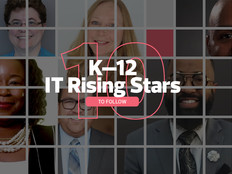Why Data Analytics Is Crucial to Remote Learning
Many experts have noted the benefits of data analytics in education. With data, schools can improve ROI on tech investments and empower teachers to make informed decisions about their instructional practices.
Today, it’s even more imperative to embrace data analytics and learn how to best use it. Doing so can help school leaders and educators get a better sense of what is and isn’t working during remote learning.
For example, Loudoun County (Va.) Public Schools leveraged data analytics to identify which families did not have access to the internet and supplied them with Wi-Fi hotspots when the pandemic hit. The district is also using data analytics to see whether students’ engagement levels are high enough to meet individualized education program (IEP) requirements, says Rachel Johnson, the district’s director of enterprise solutions.
DISCOVER: Learn how educators can better serve students with disabilities in virtual classrooms.
Best Practices for Smarter Data Collection and Analysis
With the right data analytics solution, schools can get a holistic snapshot of student and operational outcomes, allowing them to identify pain points and strategically act on those insights.
But how can they best use data to improve teaching and student learning and meet districtwide goals?
One thing to consider is finding a data analytics dashboard that captures both the qualitative and quantitative factors contributing to remote learning. While it’s important to get the numbers that show how students are performing academically with online instruction or how they’re using digital tools, those are just a few pieces of the puzzle. Collecting quantitative data on certain initiatives is also key to measuring their impact over time and developing any prevention or intervention strategies.
For instance, BrightBytes’ cloud-based data and predictive analytics platform gives K–12 schools more visibility into social and emotional learning, which is even more crucial now that many students are missing out on daily face-to-face interactions with their peers and teachers. With the platform’s dynamic survey, administrators and teachers can send students customizable questionnaires and gauge whether they feel supported academically, socially and emotionally during remote learning.
READ MORE: Find out how schools are taking SEL and mental health online.
Another best practice is to create a data leadership team. This team should be in charge of looking at the data and finding trends that can help inform next steps to take to better support students and staff during remote learning.
The data leadership team should also have the necessary training and knowledge to carry out its mission and purpose successfully. If the team doesn’t know how to handle the data, then it will be of no use.
Data leadership coaching sessions, which BrightBytes also offers, shows teams how to interpret the data they collect and implement specific strategies based on those insights. Working with a data leadership coach can also encourage more meaningful conversations about remote learning plans and the adoption of educational technology between school and IT leaders, educators, board members, parents and the rest of the school community.
Overall, there’s no question that data analytics is critical for student and staff success, particularly during remote learning. But to have a strong, long-term data analytics strategy, school leaders will need to know what type of data to look for, how to analyze it and how to use it to provide ongoing support and guidance for educators.
MORE ON EDTECH: Read how IT leaders can support data-driven education.
This article is part of the “ConnectIT: Bridging the Gap Between Education and Technology” series. Please join the discussion on Twitter by using the #ConnectIT hashtag.






![[title]Connect IT: Bridging the Gap Between Education and Technology [title]Connect IT: Bridging the Gap Between Education and Technology](http://www.edtechmagazine.com/k12/sites/default/files/articles/2014/05/connectit.jpg)




